You can see "Central America" in the other vocabularies. Central America
Central America - the region from the Tehuantepec isthmus to Panama, geographically located on the territory of the American continent.
Traditionally to the whole region, there are such countries, such as Aruba, Antigua and Barbuda, Grenada, Barbados, Bahamas, St. , Nicaragua, Guatemala, Cayman Islands, El Salvador, Grenadini, Panama, Costa Rica, Saint-Vincent and a number of other major states.
population The region is stored by the indigenous inhabitants of the region (Indians), Spanish, who settled in Central America for hours of colonization, and Africans, who were abandoned here within hours of slavery. Main mova region - ispanska
Yak disstatsya
Fly from Russia to the edge of Central America. For an hour to rise in price in small states (for example, Beliz), you can know the additional cost of one from the other regions of America (for example, in Mexico or Cuba).
relief
A large part of Central America is occupied by the middle hundreds of mountains, which is part of the Cordillera system (Pivdenna S'orra Madre, S'orra Madre de Chiapas and іn.). Overwhelming heavily crushed girski massifs, riddled with glide gorges, rivulets, some with dylyankas of glazed flat-topped ravines, and surrounded by tectonic depressions. To the cordon of Mexico temple top Central America - Takhumulko volcano (4217 m high), up to western Panami from the Pacific side to them, there is the Volcano Ridge with no vigorous volcanoes, including those that were celebrated in the historical hour, Santa Maria, Ana Irasu ta in.). The great lower reaches are not found in the north - the accumulative Tabasko and Moskitian coast (moskitiv) and the Yucatan riverside, depositions of waplands with a wide development of karst processes and forms.
Climate of Central America
Central America is referred to the tropical and sub-equatorial climatic zones, the temperature range is from +22 to +28 ° C, at altitudes from 1000 m the temperature is 5-8 degrees lower. It is a pleasant start to the tourist attraction of the region tsiliy rik.
Rune and reliability
Soil-wooded cover Central America is even more profitable. On the lowlands and in the midst of winter grains up to a height of 800 m (Tierra Caliente belt), there are humid tropical green foxes on chervono-zhovtih lateritic, above all ferrallite soils; they are rich in palms, trees with a valuable colorovy tree, lian, epifitiv. Significant dilyanka, especially on the lower reaches of Tabasco, swampy; the shores are framed with mangrove thickets. Near Uzbek - plantations of bananas, cocoa, pineapples and іn. Tropical cultures; on the dry wine-growing entrance of the Yucatan island, grow xerophilic leaves and chagarniki, - agave plantation (heneken). In the mountains, the visibility is clearly pronounced. Up to a height of 1700 m, the belt of the Tierra Templa is worn, de heat-loving see and overwhelmed with tree-like ferns; from the height of 1700 m (Tierra fria belt) - green foils from green leaves (dubi, magnolia and іn.) and conifers; alpine bows are visible in fragments 3200 m, in the south - high-altitude equatorial bows paramos. On the highlands, on the gray worms and brown-worm lateralized soils of the wormy coniferous-hard leaves, with clean little pine trees; here there is no pastoral cattle-breeding, corn, potatoes, beans are growing. On the pacific grasses - overgrown deciduous (for an hour on dry land) tropical fools(Seiba, kokkoloba і ін.) On the vermilion ferralny soils, which changes lower, in the most dry areas and in the inner groves, thorny woodlands, chacharniki, cactus burrows and secondary brown leaves; plantation kawi (at a height of 600-900 m), tyutyun, tsukrovoy cane and bavovnik. The floristic warehouse is characterized by the re-cultivation of the American species up to the north of the depression of the Republic of Nicaragua and of the ancient American species up to the south of the country.
Tvarinniy svit
Faunistically, Central America is included in the Neotropical zoogeographic region. There are wide-nosed, bakery, tapiri, armadillo, jaguar, blood-loving kazani, rich birds, plazuni and komakhi.
In the private part, the representatives of the Pivnichnaya America are also characteristic - rice, Anoti, bagato gryzuniv (hovrahi, hare, white shrews, shrews, sandy shchurs, etc.). Sered tapirіv, gryzunіv, kazanіv and ptahіv є endemic vidi.
History of the region
The vision of this geographical zone in an independent part of the world of the world from the history: the fall in 1823 was held by the First Mexican Empire, stretching for 17 years here, around the Central American Federal State - Achievements of the Federation At the warehouses of the Federation of Boules, such countries (provinces) have been selected such as Guatemala, Honduras, El Salvador, Nicaragua, Costa Rica and Los Altos (ninth centers of Guatemala and the Mexican state of Chiapas).
The rozvalu of the Federation was sent off by the community of 1838-40. Try to renew the alliance more than once, right up to the 1920s, when the independence of the powers of the Bula was solidified.
At the edges of Central America, take everything for an unforgettable experience. The exotic nature, the beautiful coastal and the inner continental landscapes, the unimportant cultural and historical decline of the ancient Indian empires, the bright Latin American culture in the modern cities - all the most important for the tourists
Power of Central America - BELIZ.
The capital is the city of Belmopan.
Beliz is a single Anglomovna land in Central America, protest here can be widely extended.
Beliz is a small power in Central America, roztashovane between Mexico and Guatemala. At the private part of Belizu, the earth is covered with a thin ball of salt, a fragment of the sea that used to be there. The soils of the central regions are stored for food and salt, and beautiful savannahs have sprung up here. There are many lakes and lagoons near the coastal zones of Belizu. Bilya shores - the corals of the reef. At the pivdenn_ part of the state, the girsky massif of the Maya will grow Finding point land - peak Viktoria. Tsi districts and Belizu are populated by small numbers of small rychki, yak, zbagachuyu mіstsevі ryunti, they are wonderfully friendly minds.
Beliz is an enemy with its beauty. It is truly a unique land, and on a critical territory it is possible to create an all-important memory of the past. Here, he found a bar'erniy reef (298 km) of the Great Bar'ernaya Reef and another one after dinner in the light of the Australian Great Bar'erniy Reef. Immediately, about 100 km away from Beliz City, there is an all-over-the-house Blakytna depression, a height of 123 meters and a width of 305 meters, a paradise for lovers of underwater swimming.
40% of the territory of Belize is occupied by national parks and natural reserves, so that it can be glorified not without a riot of farbian tropical foliage and versatile wild beasts, ale and ruins of the civilization of the Maya, ruins Belize is especially popular among divers and lovers of fishing from the sea: in the coastal waters of the Sack state there are close to 400 species of ribs and 70 species of corals.
climat
Climat is tropical, pasatny. The average temperature of the twilight is + 25-27 ° C. The average temperature of the trocha is lower on the Uzbek coast Beliza through the third, which is dark from the Caribbean Sea. The woody season is trivial with grass on leaf fall, dry season - fierce on grass. The most friendly hour for the rise in prices in Beliza - from the beginning of the day to the day. However, on the thought of the inhabitants of the city, especially a friendly serpen, which I call here other canopies. Osinni trips to Belize are not considered through the might of hurricanes.
The capital of the land of Belize is the place of Belize in the girdle of the small rivulets of Belize on the birch of the Caribbean Sea, continually collapsed by hurricanes and winds, and in order to protect themselves from spontaneous struggles, the capital was transferred to the island - none of the places, the residence of Belzmopan.
memorials to Belizu
The main memorials of Belizu - National parks, innumerable ruins, have lost their minds about the Mayan civilization, coral reefs and Uzbeks. The most famous parks of the country: Laughing Bird Caye, Mountain Pine Ridge forest reserve, Rio Bravo and many others.
Marine reserves of the country are not less popular: Glover's Reef Marine Reserve and іnshі. Bar'erniy reef is one of the natural monuments of the country. lovers of underwater swimming, including for beginners.
From the archaeological monuments of the Varto see Altun-Ha - an archaeological center, de bouly of the knowledge of the Xuanthunich - the ceremonial center of the Maya, which is located not far from the cordon of Guatemala. Here the naybilsha jade head was known - the traditional incrusted virib Maya, which symbolizes the god of the sun.
Beliz is one of the five powers of Central America, on the territory of which the legendary kingdom of the Maya stood for a long time. Archaeologists believe that during the period of the development of the civilization in Beliza, 1 million of representatives lived. Here, the powerless churches, statues, caves and Mayan Indians, often unique creations, were preserved.
resorts Belizu
Resorts Beliza for any relish - from the gutsy, general development pledges, complexes, restaurants, bars to a quiet family holiday. Monuments of the Maya, sleepy beaches, jaguar reserve, Kayes, watersheds, villages with fruit plantations, jungles with green leaves, karst peaches and grottos, mountain ridges, dzherela.
The most popular resorts of the country are the islands of Ambergris, Kolker and Chapel in the northern part of the sea, the Glovers group of islands, Turniff and the Lighthouse in the central part, as well as resort places in the ancient Uzbek part of the mainland.
The most popular beach in Dangriga is Pelikan Beach, 25 km from the sea is Columbus Reef with Tobacco Cay resort.
The seaside resort Placencia Roztashaniy is 75 km away from Dangriga on a small island. The resort has its own strawberry lagoon, which stretches over 5 km of beaches. The Placencia embankment was once entered into the Guess Book of Records, like the nayvuzhcha embankment in the world.
Hotel complexes Belizu Riznomanitni - happy awakening for general relaxation and quietness, the sounds of nature, water sports, and calm hummingbirds, going directly to the birch of the sea in the colonial style.
The hotels can be enjoyed in a variety of delicious and delicious resorts, with wonderful preparation by service personnel, excellent service and wonderful cuisine with an international menu.
The power of Central America is GUATEMALA.
The capital is the place of GUATEMALA.
GUATEMALA, Republic of Guatemala, the most recent Central American republics, occupying an area of 108,899 sq. km. Between winter and winter holidays and entry from Mexico, at the descent from Belizom, during the private and early days - from El Salvador and Honduras. At the descent of Guatemala there is a vuzky vykhid to the Caribbean Sea, where one of the main ports of the Caribbean Uzbek coast is located in Central America - Puerto Barrios; pivdenne uzberezhzha land stretching 240 km washed by the waters of the Pacific Ocean.
Relief.
On the territory of Guatemala, there are three physical and geographical regions: the lower part of the Pacific Uzbek, the upper part of the country and the central part of the country and the Peten valley at winter.
To the coast of the Pacific Ocean, there is a lower reaches, with a reach of approx. 50 km to the cordon from Mexico and step-by-step to sound on the first skid, to the cordon from El Salvador.
Loan of more than half of the territory of the country and the first for the first time, in the border of Mexico, and on the first stage, on the territory of El Salvador and Honduras. The height of the surface above the rin of the sea will be from 1000 to 2400 m, with the surrounding volcanic peaks at a height of 3700 m. the stench is divided into glibly creeping valleys, going up to the slope in the direction of the Caribbean Sea. On the first approach of the mountain, as far as the coastal lowland, the ridge of the Sєrra Madre rises, for a long time asleep, numerous cones of young volcanoes are superimposed, including the new mountain of Central America - volcano Tahum. The crystalline breed here is overwhelmed by the straining chock of the lava and the volcanic song.
Among the volcanoes, there are depressions of the wrong form, in one of them there is a lake. Atitlan. From the school of nagir, brutalized for the first time, there are short burrowed rivulets that flow into the Pacific Ocean, but a large part of the girskaya region drains with little rivulets, and lies down to the basin of the Caribbean Sea like this: in the lake. Isabal, with a wide ship-floating channel from the Amatika bay of the Caribbean Sea. In the middle and the lower course of the valley, there is a wide and flat, well-watered bottom, surrounded by large and tall spikes of the girders.
Pivnich Territory of Guatemala Loan Rivnina Peten (absolute height 150-210 m), stored in vapnyak. The surface is walled in with typical karst forms - rounded sinkholes and sinkholes. It's a lot of rychka to be destroyed in cich funnels, pushing their way to the sea in empty empty spaces and caves. The entire Peten valley is covered with dense tropical forest.
Climat and roslinny light.
The climate of Guatemala is tropical, and its characteristics lie due to its ease of accessibility and accessibility for natural people, so it is muddy in the land of the Caribbean Sea. The coastal lower reaches are the most hot and natural climate, with average temperatures of approx. 27 ° C. Naybilsh ryasnі fall off on the Caribbean Uzbek coast and on the furrows of the mountains, as well as on the rivnin Peten (1500-2500 mm on the river). The lower and lower parts of the trees are covered with a high-bored forest tropical forest, with closed crowns and mayzhe without a leaf; In some cases, they are digested with dilyankas savanas, and on porous carbonate soils of the plain, they are often rooted in xerophytes. On the Caribbean uzberezhzhі honored with palm trees.
In the middle of the Pacific, the Uzbeks fall to bring in the main lіtnі pіvdenno-zadnі muson. Short hours, ale stronger anger vipadayut from grass to zhovten, winter is dry here. Such a mode of falling off the basis of the cultivation of cereal shrouds with striking forests along the rivers of the river. At the front of the mountains, thick leaves grow thickly. Temperatures in the mountains are lower, lower in the lower reaches, and the seasonal temperature is insignificant. For example, at m Guatemala, the middle Lipnev storage temperature is 19 ° С, and the middle chest temperature is 16 ° С.
Seasonal changes start not because of the temperature, but because of the fall regime, the main part of which is the grass on the back. For example, in the capital city, de ricna suma become 1320 mm, in last hour vipada 1240 mm. In the middle belt, oak trees grow; The stench of 2,100 m is replaced by pine trees, and from 3,000 m, the temperature is lower than the growth of trees, alpine bows are repaired. In the forests of Guatemala, there are a lot of valuable tree species, including zest, Dahlberg (horn tree), cypress, akazhu (red tree) and log tree, which gives a valuable barvnik. The abundance of liani, epiphyti, orchid and іnshі roses with decorative quilts, including trees and chagarniki.
Tvarinniy svit.
On the sparsely populated lowlands there are deer, wild pig, iguani and snakes, including sprays. In the mountains, a large number of great creatures have been blamed for meat, and innumerable small ones and іnshі grisons, kinkazhs, foxes and coyotes have been preserved. The ornithofauna is the baggage and the versatility of life. Here is a description of approx. 2000 species of birds, from them bl. 200 kinds of migratory, which will resemble Pivnichnoy America. Bagato tropical birds with feathers, including species of papugs. The special love of the Guatemalans is quetzal - a ridkish bird with bright greens and a long tail. Quetzal became a national symbol; From the images on the sovereign coat of arms and the warrant of the land, the penny unit of Guatemala was named.
memorials
The country has 11 national parks and reserves of diverse flora and fauna. There is also the most important lake in Central America - Atitlan, which is 340 meters long. There are numerous volcanoes in the outskirts of the lake and the Mayan tribes are sluggish. All the lakes of the land are distinguished by their purity and maloviness.
Guatemala-City is even more innocently overlooked from the point of view of architecture: the modern chronochoses from the slopes and the concrete are mixed on the streets of the old town from the old mansions, prompted by the hour of colonization, and the new temples to the wide prospect of ancient churches. Maya Scarbi in great number are presented in the National Museum of Archeology and Anthropology.
A small place of Antigua has become a vidomim tourist center, starting its own development on three volcanoes, boisterous past, as well as ruins of ancient monasteries. Another favorite place among tourists is Tikal with palaces, temples and pyramids.
Quetzaltenango is often referred to simply as Shiloh when entering Guatemala. Nice in the place - the central square, the architectural ensemble and the Minerva park. From Quetzaltenango, we will manually increase the price in the nearest villages, we will see hot dzherels and objects will be beaten by hand robots.
Get to know the culture of pre-Columbian America most beautifully in the place of Santa Lucia-Cozumalguapa on the Uzbek coast of the Pacific Ocean. Near the place there is a bezlich city ruins and archaeological sites. And in the town of Livingston, at the ceremonial gathering of the land, rice of the Guatemalan and Caribbean cultures was intertwined with a chimeric rank. You are welcome to start the excursion on Rio-Kechuche and Rio-Kokolya.
Seibal is a significant archaeological monument to the early fall from Flores, where the thick leaves of the taut trees of the seiba are dripping. Two main areas to meet the growing stone stele. At Floresia itself, tourists should go to the zoo, 3 km away. on the road from the place and even later in the Aktun-Kan pyre, until the classic Mayan period in Motul (4 km per day from Flores), and, depending on the views of Lake Lago de Peten-Itsa.
For lovers of an active way of life, here is a reference to the rosdoll. For walks along stitch stitches, mountaineering on volcanoes and high altitudes, diving and surfing, rafting, and the joy of checking out the quiet mandrakes in Guatemala.
Salvador
El Salvador is a land in Central America. Overbought on the high isthmus between the winter and the old part of the continent, the state between Honduras and Guatemala, and its western outskirts are surrounded The Pacific Ocean.
climat
Tropic pasatny on uzberezhzh; pomirniy in girskiy districts. The average temperature on the Uzbek coast is around + 21-22 ° C. The temperature changes slightly, reaching +30 C in the leaf fall and +34 C in the birch-tree. Near the mountainous regions, in whatever hour the rock is, it is colder, at nights the temperature can drop to + 14-16 C to wind.
Roslinny light.
Near the land, dry savannas with single dwarf trees (chaparro, mimosi and іn.) Are often planted; oak and pine foils were spared on the Pacific Uzbek coast, and bamboo overgrown in the coastal smoothies. El Salvador grows a few dozen Thousands of unique balsam trees. The Spanish cedar, zhovte tree, sapodilya, chervone tree can also be created from the most valuable generations.
Tvarinniy svit.
Tvarinny svit of the country to finish the riznomanitny. The Central American tapir, murakhoid, armadillo, borsuk, linivets, porcupine village, mavpi, from hijaks - jaguar, puma, ocelot, and from plasuns - boa constrictor and splinter of species of snakes are seen. Lizards of the Iguni, Mexican deer, coyotes, bakers and children grow up in the savannah. There are caimans in the rivers. There are a few honeycombs of species of birds (papugas, tukani, chapli, wild geese, colibri and in.).
memorials
The memorials of El Salvador are more beautiful than shukati in the capital of the country - to finish the tedious place, in which the Tsikaviy, Mabut, only the Cathedral of the Catedral-Metropolitan and the memorial plaques were killed by the heroes, entrust him with him.
Sponsored by the monuments of the bygone El Salvador, perhaps by the Indian tribes, who inhabited the yogo, the ruins of ancient places and churches. You can use the Hoya de Serena as an application - to protect the UNESCO archaeological object, which is to break from the European Pompeii - a place that is also boasting under the lava of a volcano. However, when they come before the weekend, when the population of the city has disappeared, having left everything in their booths, they miraculously beat ordinary members of the Maya tribe. This year on the territory of Hoya de Serens has been dug up over 70 old days.
Among the historical memorials of El Salvador, there is no less tsikaviy memorial - Tasumal - “Misce of the Victims' Bedroom”. Tasumal є with one of the most preserving objects, folded on the cob of 1 yew. Maya tribes. Here you can build a system of canals, ritual objects, graves, palaces, a stadium for gris in a ball. The territory of the memorial is to become 10 sq. Km, a little more of the part is primed by the buddies of the coming hours.
Honduras
The capital is Tegusigalpa.
The State of Honduras borrowed a private part of the Central American isthmus. On the first and first steps of the border from Nicaragua, on the first entry - from El Salvador, on the entry - from Guatemala.
At winter and winter descent, a wide swamp goes to the Uzbek coast of the Honduras tributary of the Caribbean Sea (the Uzbek coast is 644 km), and on the first day - to the Fonseca tributary in the Pacific Ocean (124 km). Prior to the warehouse of the land, there are also numerous islands in the Caribbean Sea and Fonseca, including the distant Swan Islands on the first descent, on the road between the American Uzbeks and the Great Cayman Island.
climat
Tropic pasatny with high values in weather minds mіzh regions of the country. Seasonal changes in temperature are small, protest the Prikaribskaya uzberezhzhi and іnshі skіrіnі regions up to the height of 800 m, it is warmer than the central regions and go to the specular zone "Tєrri-caliente", in that hour the main part of the " Volodya is all the signs of a girskogo climate.
The average temperature of the twilight on the Caribbean uzberezhzhy varies from +24 With a charge up to +27 C for a while. The drop of the range is up to 2700 mm in the ric (the most recent period is from the spring to the very least, if it is practically leather day in the first month of the day). Near the pivnіchnіy part of the Uzbek coast there is a sludge of land - here we see two altogether dry periods (from the chest to the morning and from the sickle to the spring), and the cake is pampered by the sea breeze. On the islands of Islas de la Baia, the climate is close to the subtropical sea, and the cake is poured by continuous passes from the sea. Neridkі ruinіvnі tropical hurricanes.
goodness and tvarinny svit .
Baked and in the lower reaches of the Caribbean Uzbeks and lay down on the ground before the boules were covered with thick tropical woods from evergreen trees, as in this hour of frequent knowledge. Vishche in the mountains, de temperatures lower, vyrostayut foxes from oak and pine. In larger arid inner areas, including the Tegusigalpi and Territories for the day and the winter, if the leaves are infected with grassy savanna and low-growing species.
Yak and in the regions of Central America, in the forests of Honduras, there are a number of valuable tree species. It is especially rich in growth on the great mayzhe of the unproblematic lower reaches of the Moskitovy coast and on the heaps of the pre-colonial mountains. At the last time of the territory, as the archipelago of the Islas de la Baia, the island of the Ukrainian people of Honduras, they passed the control of the English, as they intensively violated the trees. In general, Honduras is growing up with a superb wealth of species of roselin, including both beautiful and beautiful species of trees, which settle on trees.
In all the territory of Honduras there are a lot of wild beasts, where the zavdyaki have come in due to the weak population of the mountainous region, the tropical climate is not even more comfortable for people. Here, there are special types for Central America, as well as rare species: weddies, small species of deer, mavi, wild pigs and bakers, tapiri, borsuks, coyotes, vovki, foxes, jaguars, ocelots, rice , more other kittens, aligatori, crocodiles, iguani and snakes, including snakes (up to the number of deadly kaisak and kaskavel), as well as murahoids, coati, armored snakes. Ornithofauna bagata includes wild indichka, pheasant, parrots, including macaw, chaplus, toucan, and species of insects.
memorials
Zikavikh mice, tse in the first place of Maya - Copan, diving and snorkeling on the Utila abo Roatan islands, opening of the Tyutyunovy factory in the Santa Rosa de Copan, I will remember to take a cigar during this process. mіstakh, all over the Caribbean Uzbek. In place of the colonial architecture, you can see all the same Santa Rosa de Copan and the old capital - Comayagua. Near the capital city itself - Tegusigalpi, you can marvel at a couple of small churches and pilgrims not far from the capital - the church in Sayapa. The main hub, through which practically all routes pass, is the city of San Pedro Sula.
Nicaragua
Nicaragua is the most central, and most important land of Central America, between Honduras at winter and Costa Rica at winter.
The power in Central America, between the winter and Honduras, in the winter - with Costa Rica, the border of the Uzbek land is washed by the waters of the Caribbean Sea, in the west - the Pacific Ocean. The country has a number of other islands near the Caribbean Sea. Nicaragua is the region's largest power in the region.
climat
Tropic pasatny. The average temperature from birch trees on grass becomes + 24-32 С, charge - 16-20 С. 20 C, the charge often does not change +16 C. The temperature difference between the night and the day can reach great in any hour of fate.
Central America
(Central America)
Homes about Central America, History and Geography of Central America
Homes about Central America, History and Geography of Central America, Politics and Economics
1. Geography
Geological budova and korisny kopalini
internal water
Rune and reliability
Tvarinniy svit
2. Political geography
Costa Rica
Republic of Nicaragua
Salvador
3. Population
4. History
Tribes of Central America
Religious manifestation and imaginative mystery
Central America- tse the region, spreading between the Vinny and the scorching continent, is carried geologically and geographically to the Pivne American continent. historically Central America You can see how the self-styled part of the light is.
Panіvny mova in Central America is Spanish, but one vinyat is English Beliz. The population of Central America resembles that of the native inhabitants - Indians, as well as of the Europeans and the African slaves brought by them.
Or it will change in part, or it will increase to enter the Middle America, in the wilderness of the future.
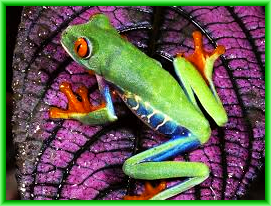
Geography
take care
The Uzbeks of the Pacific Ocean with the high-frequency swamp of the coastal lower reaches in the northern part of the straight, in the north - strongly divided by the floods (Fonseca, Niko, Chiriky, Montiho, Panamskiy) and the first mainland islands (Koiba, Sebako, Rei і ін.). The shores of the Mexican inflow (the inflow of Campeche) and the Caribbean Sea, but also low, lagoons (the lagoons of Karataska, Chiriky and іn.), Lishe in the northern part of the Yucatan river the shores are oblyamovanі with drіbnіm, head rank coral spikes.
Genetic types of the island land region. Influencing the passate circulation and the relief of the islands into the shape of the climatic features. Tropical hurricanes, their heritage. spicy rice organic light... Great steps of anthropogenic change in the nature of the islands.
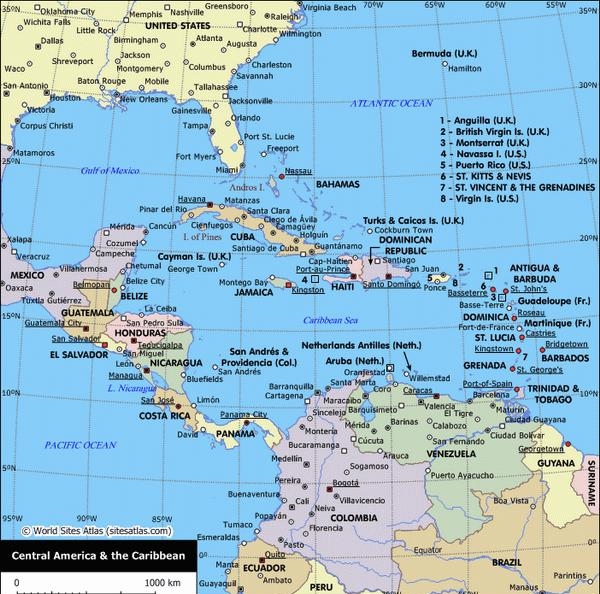
Lands of Central America and the Caribbean - Antigua and Barbuda, Aruba, Bahamas, Barbados, Belize, Guatemala, Honduras, Grenada, Cayman Islands, Costa Rica, Cuba, Montserrat, Republic of Nicaragua, Panama, El Salvador, Saint Vincent and Grenadin, Saint Kentts and Nevis, Saint Lucia, Trinidat and Tobago,
relief
A large part of Central America is occupied by the middle hundreds of mountains, which is part of the Cordillera system (Pivdenna S'orra Madre, S'orra Madre de Chiapas and іn.). Overwhelming heavily crushed girski massifs, riddled with glide gorges, rivulets, some with dylyankas of glazed flat-topped ravines, and surrounded by tectonic depressions. to the cordon Mexico, There is a very high peak in Central America - Takhumulko volcano (height 4217 m), up to the western Panami from the Pacific side, the Volcano Ridge from the powerless volcanoes, including Santa Claus Ana, Kosiguina, PZAS, Irasu і ін.). The great lower reaches are not found in the north - the accumulative Tabasko and Moskitian coast (moskitiv) and the Yucatan riverside, depositions of waplands with a wide development of karst processes and forms.
Geological budova and korisny kopalini
At the private part, relatively stable blocks of the Central American massif and Yucatan plates are being re-stitched, the first part is occupied by the fold belt Cordillera.
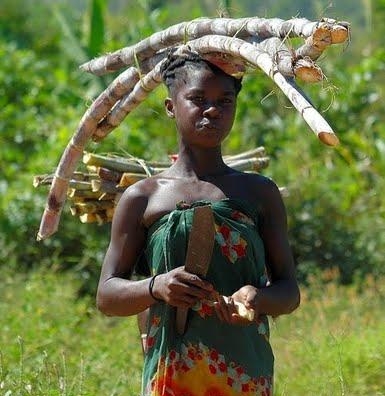
The Central American array of statements is a complex-folding complex of metamorphic rocks of the Paleozoic and, perhaps, the Precambrian (graywacke, creme shale, diabazi, amphibolite, gneiss), unsuitable for the stony-coal-Permian-Jurassic treasures. Widely widened Devonian, Kamyanovugilny and Kreydian granite.
Yucatan plate є Epipaleozoic platform; to be folded from a folded base, folded by metamorphic rocks, Paleozoic and, possibly, Precambrian, and in obscurely over-curving the top of horizontal sedimentary rocks from the Mesozoic and Cainozoic (up to 6 km taut): Terigenny fall off.

Folding belt Cordilleur Mexico; to Yu.-V. From the isthmus of Tehuantepec, we will see from the Central American massif by the foremost progin Chiapas, by the sea and continental attributions to the Paleogene and Neogene. Near the former belt, the metamorphic folding complex of the Paleozoic period is barely exposed, such as a cross on the territory of Guatemala to the Late Paleozoic molasse. The main place is occupied by the Mesozoic, most importantly, the most important carbonates and flavors, which include a large number of hyperbasites. In the early regions in the Mesozoic, the products of the main storehouse under water volcanism were widely developed, which were formed in the oceanic minds. Tsi regions are characterized by the development of salt domes. The main fold is attributed to the early Kreidy - the early Paleogene. Smuga of folded kreidians and more ancient generations set up a gentle arc and walk on the first descent from the waters of Honduras.

On the older large ancient structures, a belt of Neogene and extinct volcanoes grows, which stretches from Mexico to the Panama Canal along the Pacific Uzbek coast, parallel to the Central American glide-water gutter... Young volcanic and tectonic activity is associated with the survey of the Isthmus of Panama, which is a view of the Caribbean Sea to the Pacific Ocean.
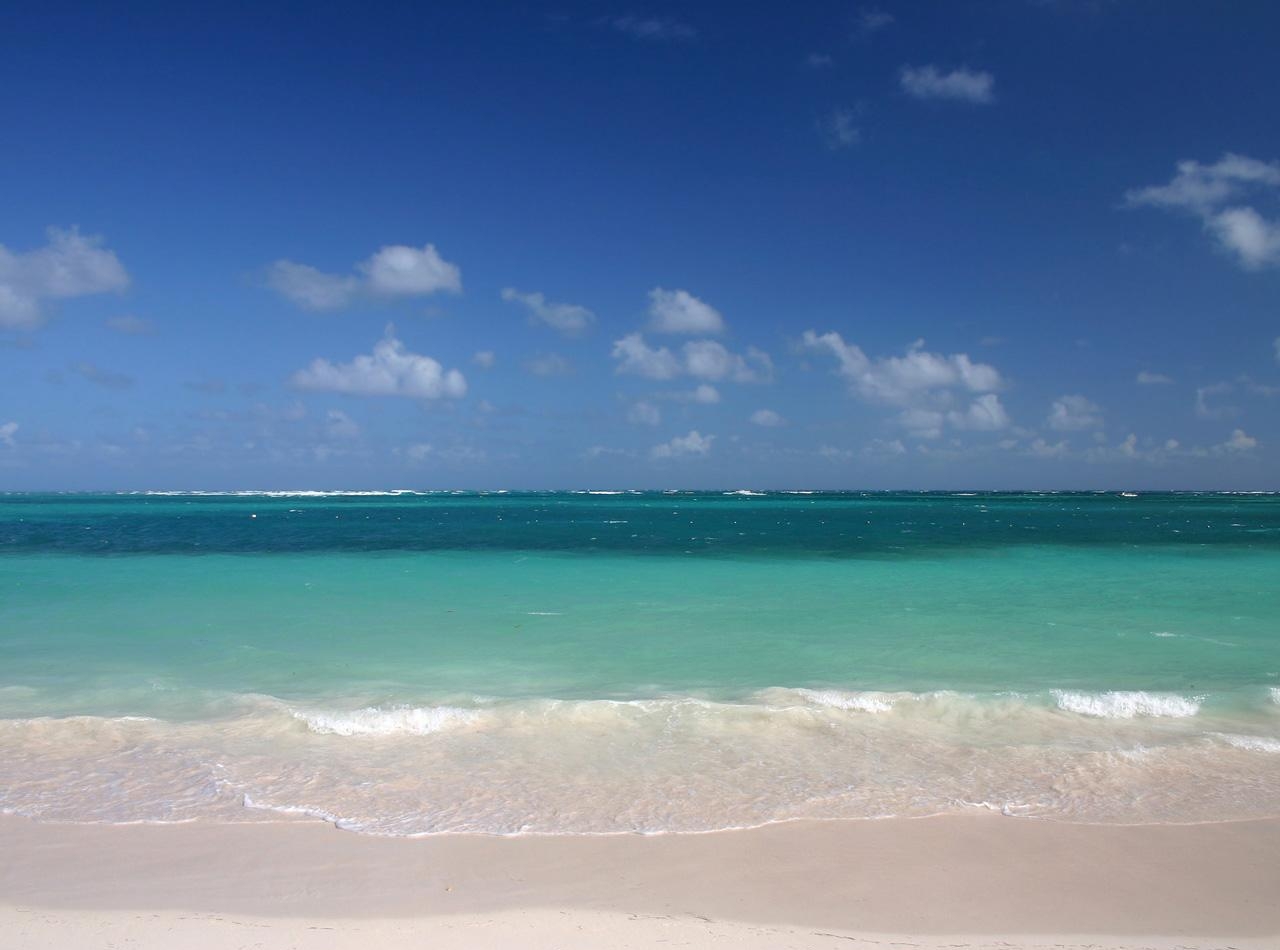
Three brown copalines Central America is represented by gold ores and medium, represented by middle ones (El-Rosary in Honduras) І other (Pis-Pis, La Luz in Republic of Nicaragua) For the sizes of hydrothermal genera, we will confine it to the Creydian intrusions, and rosies (Coco in the Republic), as well as other genera of surmi, mercury. Three types of hyperbasites are linked to other genera of chromite; the volcanic intrusions of the Neogene is the great copper porphyry of the Panami clan (Cerro Colorado and Cerro Petakilje). Before the salt domes of the Tehuantepec isthmus, there was a load of black gold and gas.
climat
Central America lies in the tropical (to the depression of the Republic of Nicaragua) and subquatorial climatic belts... At the connection with the camp in low latitudes (7-22 ° N lat.) Vona will reject the rich sleepy heat (radio balance, at 80 kcal / cm2 per pik, 1 kcal = 4.19 kJ) rock ( Average temperature the coldest month in the lower reaches from 22-24 ° С in the north to 26 ° С in the south, the warmest 26-28 ° С; in the mountains at a height of 1000-2000 m at 5-8 ° C lower). At the winter-winter, winter (according to the date of the Mexican inflowsі of the Caribbean Sea) climat The fall of the sea is 1500-2000 mm on the river in the north up to 3000 mm (in mids up to 7000 mm) in the south. for ryk vipadaє 1000-1800 mm fall. The inner lane and parallel to the lowland paths, to the lower slopes of the Yucatan island, will receive less than 500 mm of fall on the river. In winter Central America, the visibility is wearing off, and in the Pacific Ocean, the dry winter season of bends is weak.
internal water
Due to heavy falls and the girly nature of the crisis in Central America, change the size of 600 mm, which can be reached on the Caribbean skylines of Costa Rica and the panami of 1500 mm and more, rather than on the maddens of the Middle East. ... Richkova hedge is dense, behind a vignette of the Yucatan pivostrova, mayzhe of diluted surface watercourses. Overwhelming short, burrhliv, rapids; most - Motagua, Patuk and Coco. rychki to the pool Atlantic Ocean povodnі stretching all the rock; Rikas that flow into the Pacific Ocean are characterized by sharp drops of vitrati and strong floods. There are a lot of lakes near the tectonic valleys, including most - the Republic of Nicaragua, Managua, Isabal, Atitlan.
The dry land of Central America will provide the largest sea basin of the western part of the Atlantic Ocean - the Caribbean Sea, roasted in a young depression of the suboceanic type. Pidvodnі rapids lead a depression on the decіlka ulogovin glibinoyu 4-5 yew. M. best glybin- 7090 m - designated in the Cayman trough along with the Yucatan and Nikaraguan ulovens. The width of the shelf zone is very variable, reaching for the Uzbek Republic and the Republic of Nicaragua as much as 240 km.
overburdened in tropical beltі vіlnly share water with the Atlantic Ocean і Mexican seclusion The Caribbean Sea is characterized by high water temperature and normal oceanic salinity. The average water temperature on the surface becomes 26 ... 28 ° С, the salinity value in the surface sphere in the larger part of the aquatorium is 35-36% o.
Across the Caribbean Sea and the Yucatan Channel from the Atlantic Ocean into the overflowing waters of the Pivnichnaya Passate Current, as the passage from the Mexican inflow gives an ear to the Gulf Stream. Near the western-western part of the Caribbean Sea, as well as on the axis of the Malikh Antilles and the Green Misu islands, the West Indies hurricanes arise - tropical cyclones, the wind speed is 40-60 m / Such hurricanes collapse at a speed of 300-550 km / day, from the end of the winter to the Mexican inflow, and then to the winter. It’s not less than three hurricanes in the Caribbean Sea, but in the vicinity of rocky it can be up to 20, often for everything in spring.
The ichthiofauna of the Caribbean Sea has over 800 species of ribs, from close to 450; up to the number of industrial species, 50-60 species are introduced. The part of the ribs (lutsian, kam'yani perches, flounder, stingrays, etc.) is important. It is grown on the shelf, especially on the coastal dilyankas, in small streams and in the adjoining dilyanka rychok. Near the deep-water areas of the Caribbean Sea, ocean ribs (tuna, marlini, mackerel) are sluggish. Purchase of tuna in timed to zones clay waters, Which leads to an increase in biological productivity.
The economic and strategic importance of the Caribbean Sea is even greater, since it is on the way from the Atlantic Ocean to the Pacific Ocean through the Panama Canal, through the Panama Canal, through the Panama Canal, the Dovzhin Canal will become 65.2 km by land, and from the Limit canals to the Panama City - 81.6 km. A number of guys on the canal make the court 26 m above the sea level in a piece of Lake Gatun. It takes about 7-8 hours to go through the Panama Canal, 35-40 trials will pass here, and in the middle, 14 yews will pass.
On the shores of the Caribbean Sea, there are a lot of great ports, which will be safe in the main transport and transit of naphtha products. There will be as many as 100 million tourists as well as waterways, and great cruise ships and yacht flotilla lines will come here every day. Intensively shipwrecking and obstructing the water, coming up from the enchanted talin, poses an ecological threat to the whole unique tropical basin.
In the Caribbean Sea and adjacent waters fall 12% of all coral reefs in the world. Ci unikal biologicheskie education chuyly reacts to insignificant changes in physical cheeky authorities sea water i can vikoristovuvatysya yak indikatori will become dovkilla... In Danish hour, 30% of the coral reefs of the Caribbean Basin are found under the threat of bending. The main reasons are the lack of water intake in the basin and the improvement of solid runoff from the territory; the growing hopefulness of the difficult conversations from waste waters from tourist and communal facilities, as well as without a court; Budivnitstvo that vidobutok of cinnamon copalins on uzberezhzh. The degradation of coral reefs is to create a natural resource base for tourism to the extent of the coastal erosion and destruction of beaches. Anthropogenic inflow on the coastal ecosystems pogirshu і mill of mangroves, heals the western shores of Central America. For the last 20 years, the tilka has spent 65% of its mangrove leaves.
Similar to the Seredzemny, the Caribbean Sea in Danish hour is included in the number of regional seas, which require thermal complex, come in once to protect it. International Spіvrobіtnitstvo in tsіy galuzі is regulated by the first for all the Cartagena convention in 1983 about the zahist i rational victorian the sea center of the Caribbean basin, as well as supplement it with protocols (how to improve the naphtha protection, especially to protect the territory of the region, to fight with the land dzherels of the sea center).
Rune and reliability
Soil-wooded cover Central America is even more profitable. On the lower valleys and in the midst of winter grains up to a height of 800 m (Tierra Caliente belt), there are humid tropical green foils on red-zhovti laterite, above all ferralite soils; they are rich in palms, trees with a valuable colorovy tree, lian, epifitiv. Significant dilyanka, especially on the lower reaches of Tabasco, swampy; the shores are framed with mangrove thickets. Near Uzbek - plantations of bananas, pineapples and іn. Tropical cultures; on the dry wine-growing entrance of the Yucatan island, grow xerophilic leaves and chagarniki, - agave plantation (heneken). In the mountains, the visibility is clearly pronounced. Up to a height of 1700 m, the belt of the Tierra Templa is worn, de heat-loving see and overwhelmed with tree-like ferns; from the height of 1700 m (Tierra fria belt) - green foils from green leaves (dubi, magnolia and іn.) and conifers; alpine bows are visible in fragments 3200 m, in the south - high-altitude equatorial bows paramos. On the highlands, on the wormwood and brown-worm lateralized soils, the wormwood-hardwoods, in small pieces of pure pine leaves; here there are no pastoral cattle-breeding, vyroshuyutsya, cartoons, beans. On the pacific grasses - overly leafy (for an hour on dry land) tropical foils (seiba, coccoloba and in.) on brown-worm ground; plantation (at a height of 600-900 m), tyutyun, red cane and bavovnik. The floristic warehouse is characterized by the re-cultivation of the American species up to the north of the depression of the Republic of Nicaragua and of the ancient American species up to the south of the country.
Tvarinniy svit
Faunistically, Central America is included in the Neotropical zoogeographic region. There are wide-nosed, bakery, tapiri, armadillo, jaguar, blood-loving kazani, rich birds, plazuni and komakhi.

In the private part, the representatives of the Pivnichnaya America are also characteristic - rice, Anoti, bagato gryzuniv (hovrahi, hare, white shrews, shrews, sandy shchurs, etc.). Sered tapirіv, gryzunіv, kazanіv and ptahіv є endemic vidi.
In political geography
The political geography of Central America is based on the offensive powers:
Beliz
Beliz (English Belize) - power in Central America. Until 1973 bearing the name British Honduras.
Mezhun at pivnichi from Mexico and on entry from Guatemala. Shidne uzberezhzhya Belizu is washed by the Caribbean Sea.
Land area - 23 yew. KmІ, population - 301 yew. Chol. (2008).
A great part of the territory of the land is lowland, with a small swampy plain with no lakes and lagoons. Burn on the floor Mayan up to one thousand one hundred and twenty two meters high. Tse is the most sparsely populated part of Belizu. the land of vivchenia is weak, there are jokes of ancestors black gold.
Climat Belizu is a tropical pasatny. The average monthly temperature is close to 26 °. Pivnichno-skidny passat bring a lot of fall. The number of them grows from weekends on a weekday from 1300 to 3500 mm on the river. The season of planks is three years old. Hurricane from the Caribbean Sea, which is supervised by angry and hateful events, bringing the land of great dashing.

Closely half of the territory of the country is covered in tropical foils. At first entry and at night Belize, significant areas are occupied by deciduous broad-leaved and coniferous forests. Uzdovzh uzberezhzhya stretch out overgrowths of mangroves. Foxes are rich in valuable tree species, among which the most state-of-the-art are mahogany and pine.
Tvarinniy svit Belizu to finish the riznomanitny. There are lingering broad-noses, jaguars, armadillos, great іguans and іnshі creatures. Even more abundant birds, including papugs and colibri. sea water bilya shores of bagati ribbons, crayfish and turtles.
Guatemala
The most important legislative body is a unicameral Republic (158 deputies), which, like the president, is used for 4 rockets.
Honduras
The Republic of Honduras is a power in Central America. The capital is the city of Tegucigalpa (until 1880, it was called Comayagua).

The only reason why the power is Honduras is Honduras; It is known from one of the legends, the name of the country resembles the sight of Christopher Columbus from the hour of the last, fourth sailing to Novy Svit in 1502. Having spent your ship in a strong storm, if you were in the distance, he said: "Gracias a Dios que hemos salido de estas Republic Honduras" This phrase gave the name to Misa Gracias a Dios and the Republic of Honduras. The Glybin of the coastline of the Republic of Honduras is really great, so the name could have been given and the pose with the sound of the said phrase of Columbus. The first mystery is to name "Honduras" for the meaning of the place on the west from Misu Gracias and Dios appeared in the texts in 1607.
Costa Rica
Costa Rica is one of the least powerful powers in Central America. Roztashovana in the most higher part of the isthmus, two continents. Costa Rica is between two countries: the Republic of Nicaragua at celebrations and the Republic of Panama at the first meeting. The Pacific Ocean is on the coast from the beginning of the day and from the sunset and from the Caribbean Sea - from the outset. Uninvolved at home, Costa Rica is also a big country.
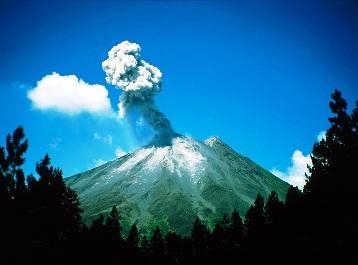
The capital of Costa Rica is the city of San Jose (890 thousand people).
Costa Rica is the first land in the world, as it was the army - in 1949, when it was a class struggle.
Republic of Nicaragua
Republic of Nicaragua (іsp. Rep'blica de Republic of Nicaragua - power in Central America, between Costa Rica (in private) and Republic of Honduras (in winter).
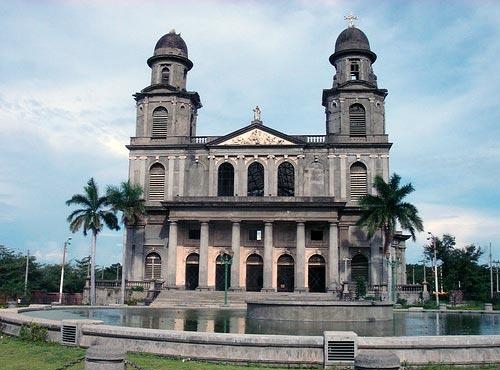
Panama
The Republic of Panama is a power in Central America on the Isthmus of Panama, between the Caribbean Sea and the Pacific Ocean, between Costa Rica at the entrance and the Columbian Republic at the descent. From one of the Indian films I can call it “misce de bagato ribi”.
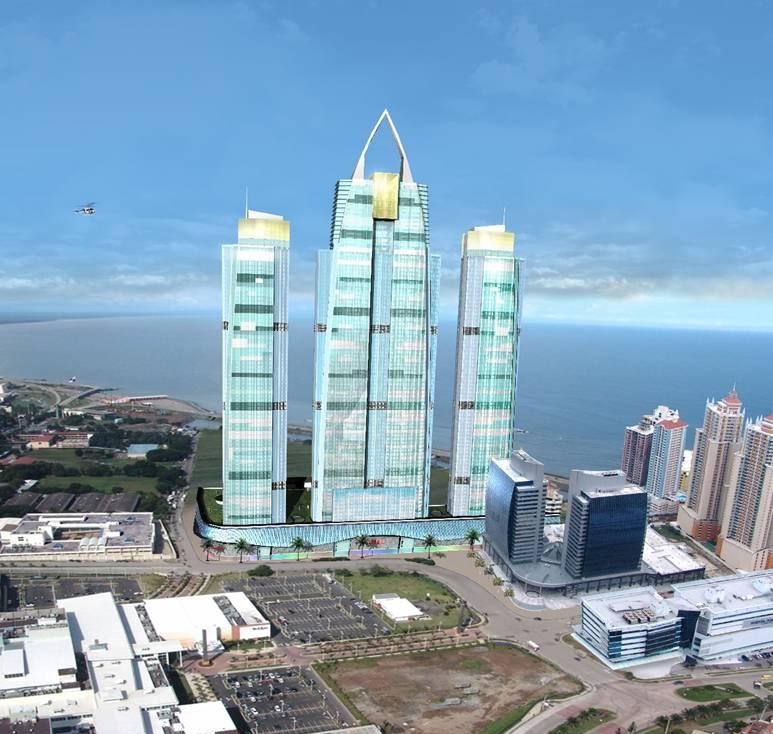
Geographic coordinates - 9 00 N, 80 00 W.
Klimat - marine tropical; visoka volog_st, hmarn_st; From grass to the grassy-season of boards, from grass to grass-to-dry season.
Relief, head rank, twists, nerves, burns and іvnini. The most important point is the volcan Baru (3.475 m), located in the province of Chiriqui.
Central America is a geographic region that borrows the most part of the continent. I am interested in all regions of the world. At the entrance the Pacific Ocean is stretched, and at the descent - the Caribbean Sea. The region consists of 7 independent powers - Guatemala, Nicaragua, Panama and Honduras. Central America borrows an area of 521,097 sq. Km. і represents a natural place mіzh Pіvnіchnoi i.
Central America is on the trail and for the reason the weather is spectacular, but the season is off. At its own large part of the region is covered with thick woodland. Here, the majestic versatility of the tall and creature species is created. Jaguars, crocodiles, pumis, and also a small string toad, dart frogs, live in the woods of the woods, as a good know because of its forced otty. The Uzbeks are beautiful, and by the way they are famous beaches. Near the Caribbean Sea, which is the coast of Central America, there is another one that is the greatest on the planet, which is hostile to its own wine-growing corals, red-colored ribs and other sea fronts. The middle of the region is occupied by high mountains, like є part of the Cordillera - one of the most girly lantsyugs on earth. Bagato girski peaks are, for the most part, active volcanoes.
Central America has a population of close to 41.5 million inhabitants. Great yogo part of the razmovlyaє ispanskoyu. One land in the region, whose language is displayed as Spanish - tse Beliz, de-developed in English. The part of the population of the Central American regions is important, it is made up of breeds. The price of the site of immigrants from the Muscovy Indian tribes. Central America is also home to many dark houses. The number of the largest in Belizi, de store three more than 30% of the population of the country. The population of Central America is mostly Christians, most of them are Catholics. It is a great fact that the inhabitants of the region in their larger part are even more religious.
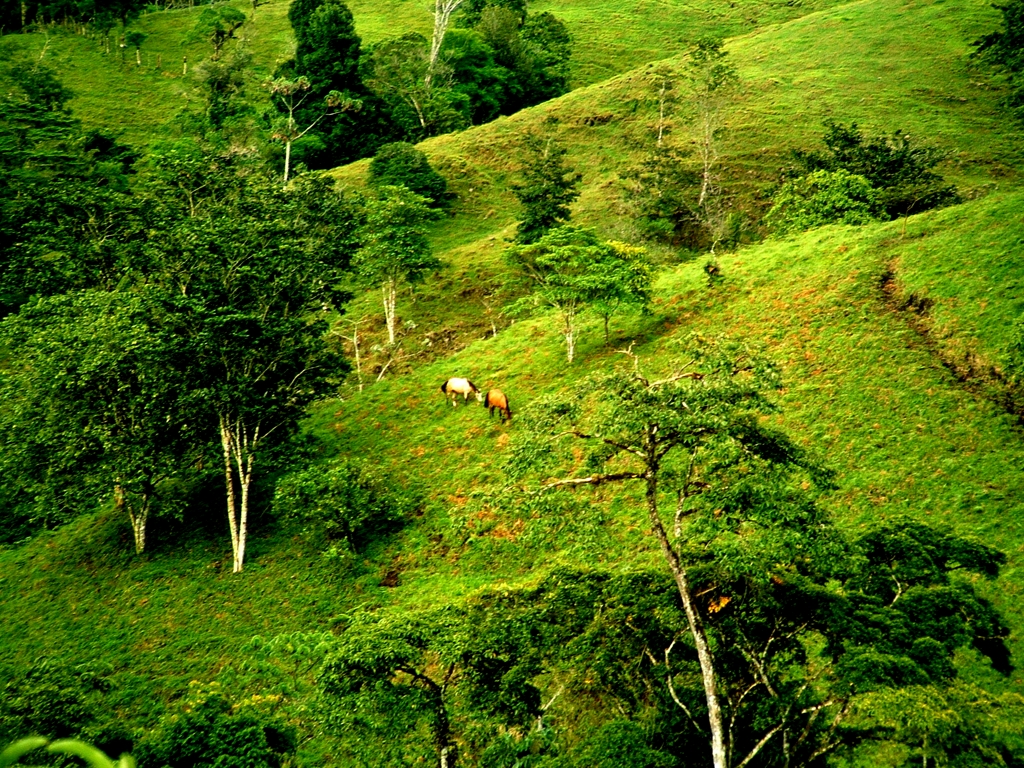 Central America has a growing economy. Most of the powers in the region endure daily and long-lasting victims of internal conflicts and political instability. Against the background of its suspects, Costa Rica is growing like a viciously calm, stable and developing power. Central America wines' wyrobnik kawi, cocoa, candied canes and magnificent fruits of exotic tropical fruits, especially bananas. The tourism industry has become increasingly important for the economy of the world. Warm climate and beautiful beaches will attract more and more tourists from the winter days. Mіsceznakhodzhennya tsih region is viklyuchno strategіchno. Through the territory of Panami there is a single waterway through the Caribbean Sea and the Pacific Ocean. An alternative to the road - ob'yhati to the continent Pivdenna America from pіvdnya through the Drake channel. Together with the leaders of the countries of Central America, they go through the processes of trade and economic integration. Central American Spilny Market (English CACM) is a trade and economic union of the regions of Central America. The organization was founded in the 60s by Guatemala, El Salvador, Nicaragua and Honduras. Unsuccessful development of the organization came to Costa Rica.
Central America has a growing economy. Most of the powers in the region endure daily and long-lasting victims of internal conflicts and political instability. Against the background of its suspects, Costa Rica is growing like a viciously calm, stable and developing power. Central America wines' wyrobnik kawi, cocoa, candied canes and magnificent fruits of exotic tropical fruits, especially bananas. The tourism industry has become increasingly important for the economy of the world. Warm climate and beautiful beaches will attract more and more tourists from the winter days. Mіsceznakhodzhennya tsih region is viklyuchno strategіchno. Through the territory of Panami there is a single waterway through the Caribbean Sea and the Pacific Ocean. An alternative to the road - ob'yhati to the continent Pivdenna America from pіvdnya through the Drake channel. Together with the leaders of the countries of Central America, they go through the processes of trade and economic integration. Central American Spilny Market (English CACM) is a trade and economic union of the regions of Central America. The organization was founded in the 60s by Guatemala, El Salvador, Nicaragua and Honduras. Unsuccessful development of the organization came to Costa Rica.
Central America- the region of the planet, spreading between the Pivnichnaya and the Pivdennaya Americas and the clean geographic point dawn, do it yourself before Pivnichniy America... Protestably, historically (as if to look into the Persha of the peoples who inhabit Central America and the diversity of their cultures), the whole part of the planet can be completely covered by a uniquely single and completely independent territory. I have a little bit of alcohol, I want it to be too heavy to drink beer.
Lands of Central America
If you look at Central America from the position of a military geographer, then you should not enter the warehouse without these territories:
- Honduras;
- Nicaragua;
- Panama;
- Salvador
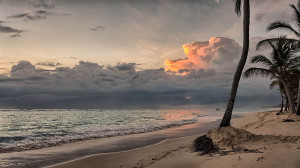
Our project, protest, having respected the power of sharing the land of Central America and the land (islands) of the West Indies, roztasovani in the Caribbean Sea and historically unreasonably tied to the mainland.
- Pidkreslyuєmo: from the scientific point of view the West-India (or the Caribbean) is a central region that does not belong to Central America
Lands of Central America :, (Netherlands), (Great Britain), Virginsky Islands (Great Britain), Virginsky Islands (USA), Guadeloupe, Guatemala, Honduras, Grenada, Dominika, (Kostya Kostya Republic) -Rica, Cuba, Montserrat, Nicaragua, Panama, Puerto Rico, El Salvador, Saint Vincent and Grenadin, Saint Kitts and Nevis, Saint Lucia, Turks and Caicos, Trinidad and Tobago, Jamaica.
Geography of Central America
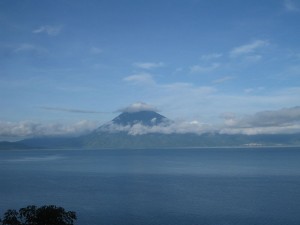
A large part of the territory of the region is occupied by mountains, there are a lot of active volcanoes. Rіvninnі mіtsevostі zooseredzhenі head rank near the Uzbeks. You can see the offensive girski masivi: Guatemalan volcano nagir'ya (from 1000 to 3000 m), the mountains of Honduras and Nicaragua, two mountain ridges (San Blas and S'or Panra nia de Baudo.)
- Nybilshu Visotu volcano (4,217 m) and taka (4,117 m) in Guatemala
- sami high mountains in the West Indies, it is located on the islands of Gaiti (Mount Duarte, 3175 m). It is also possible to see the girski system in Cuba (Sjurra-Maestra, up to 1956 m) and Jamaican (Blue Mountains, Blue Mountains, up to 2256 m)
- The most important lake in Central America: Nicaragua (8,264 km2), roasted in the same land. Lake є different for size in Latin America(Mexico, Central and Pivdenna America) the lake is the 20th behind the sizes in the light. The depth of the majestic freshwater water is reach 70 meters

, "Blakitna dira"
Itself in Central America is located another near the light behind the size of the coral reef. Mesoamerican reef dragging along the Uzbek coast Beliza and Guatemala: over 1,000 km "Happiness divers"
- Lake Niglibshe of Central America, located in Guatemala. Height of yogo reachє 340 meters
- One small river of Central America - Coco abo Segovia (Río Coco, Río Segovia)
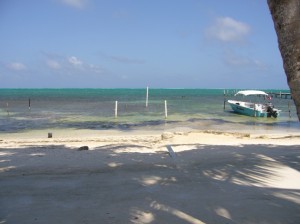
Beach in Belizi
Climate in Central America, as well as on the West Indian Islands is tropical, for a new characteristic high average temperatures, depending on the weather. This kind of weather is good for a change and it is not enough for an important robot.
- As a rule, there are two main seasons here: winter (the driest and the most temperature is the most important time for rock: leaf fall-early) and summer (it’s time for heat and heat, it’s free of fall, not very strong tropical hurricanes: grass. Spring and autumn, I want to be present in the special calendar, to fill the rosmit with the head of the rank through a range of high temperatures
Climate to grow strongly along the coast: Pacific is characterized by lower temperature and environment, for Uzbeks of the Caribbean Sea, typical tropical anger and spec. The islands of the West Indies in the plan of the boards, it is possible to say, there are three pieces of waste: for the porridge, the average fall rate, for example, in the Cuba warehouse is close to 1400 mm, in Nicaragua won up to 5000 mm. Varto vrahovuvati, about ¾ all fell off during the summer period.
- The average daytime temperature becomes + 23-28 ° С on the riverside and coastal dilyankas, in the mid-range temperatures fall until the middle estimates + 10-22 ° С (in the fallowness in the area: degrees, for the mountains in Honduras, there are more rapid races: + 10-22 degrees). There are practically no changes in winter and summer temperatures: for example, in Costa Rica, the average temperature is + 23 ° С, and lime + 25 ° С.
Central America is a center of sun and food beaches of the oceanic Uzbek coastline, tropical grows and wild creatures. And only here you can learn about the pyramids of the found Mayan culture, which is still a wonderful people.
Central America - specialties of roasting and relafu
 In his own way geographical position Central America is often referred to as the territory, although the history of the whole continent can be seen as a part of the world. If in 1823 the Persha Mexican Empire fell apart, in the ninth territory of Central America there were as many as twenty rockets rose to the ground under the name of the Federation of Central America. Pislya tsyogo huge wines led to the collapse of the Federation and the union was no longer far away. However, with this rank Central America has earned its own status as a continent.
In his own way geographical position Central America is often referred to as the territory, although the history of the whole continent can be seen as a part of the world. If in 1823 the Persha Mexican Empire fell apart, in the ninth territory of Central America there were as many as twenty rockets rose to the ground under the name of the Federation of Central America. Pislya tsyogo huge wines led to the collapse of the Federation and the union was no longer far away. However, with this rank Central America has earned its own status as a continent.
Countries that can be referred to the lands of Central America:
- Salvador
- Beliz
- Nicaragua
Inhabitants of the cich powers grow up in spanish language.
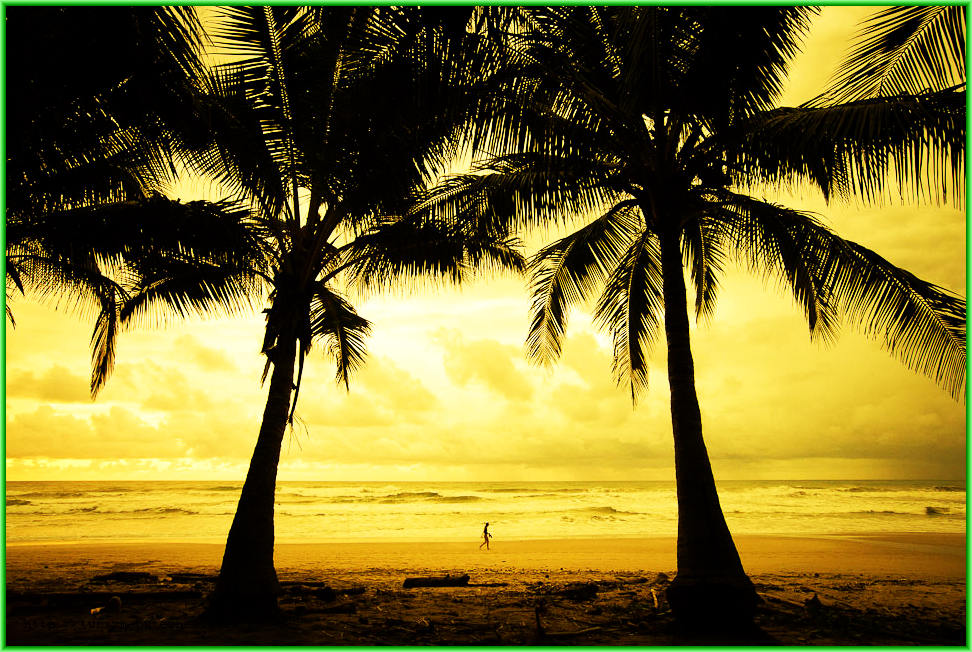 Central America would like to reach a small territory, but it will slightly interfere with its seven powers of the middle size. The whole territory is a vuzka smug land on the blue. Smoothly transition from the winter approach to the early stage close to the Panama Canal, the territory of the step-by-step sounds from 960 kilometers to 48. Central America can rightfully be called a bridge, which is the end of the motherland how to pass through this territory.
Central America would like to reach a small territory, but it will slightly interfere with its seven powers of the middle size. The whole territory is a vuzka smug land on the blue. Smoothly transition from the winter approach to the early stage close to the Panama Canal, the territory of the step-by-step sounds from 960 kilometers to 48. Central America can rightfully be called a bridge, which is the end of the motherland how to pass through this territory.
Typical for Central America girskaya mіstsevіst, as borrowing a large part of the territory. Suddenly enter the mountains of the middle height, as they are united in girsku system Cordilleur: Sєrra Madre de Chiapas, Pivdenna Sєrra Madre і ін. The Takhumulko volcano is the most sought-after point in Central America, so it will rise to the height of 4200 meters. Uzdovzh of the Pacific Ocean behind the Takhumulko volcano a majestic volcanic ridge is being built. Bagato from the volcanoes, which are new to enter, are meritorious and of the year, and the people of them have been seen in ancient times - Santa Ana, Atitlan, PZAS and іnshі.
Water wealth of Central America
 This is due to the fact that practically all regions of Central America are washed by the waters of two oceans: the Pacific. The very zavdyaki of such a specialty is tourism in the cikh lands of the prosperity.
This is due to the fact that practically all regions of Central America are washed by the waters of two oceans: the Pacific. The very zavdyaki of such a specialty is tourism in the cikh lands of the prosperity.
Along with the oceanic waters, there is a small continental zone that is hostile to its internal waters. The directors of the girskiy relєfu and the great number of fallen off, which vipali, Central America is a majestic little rychok and rychek, as proud and burrowing streams flow through the territory. Coco, Patuk and Motagua are the most popular. There are no less widening є і lakes, the middle of the great vvazayutsya - Isabal, Atitlan, Managua.
Bilya shores of Central America rose the nameless pool of the legendary Caribbean Sea, as it is not only hostile to the versatility of its water light, but, as soon as we caress our warm waters, we will bend the majestic dream of the mandarin.
Features of the Climate of Central America
 The geographic location of Central America in the area of Eqvor and the grizzly culture of the city is a hot and vivid climate in the region. The climate here is tropical and subquatorial. Low latitudes will accept the fact that the territory of Central America will take away a great amount of sleepy warmth and guarantee high temperatures throughout the calendar year. On the graves of the gir, reloading the climate for the rakhunok of the great number of fallen off. In summer, the weather can be plank-like, a little shy of the velvety sonechka walkways. And the winter is dry and warm, with a blame, you can get it.
The geographic location of Central America in the area of Eqvor and the grizzly culture of the city is a hot and vivid climate in the region. The climate here is tropical and subquatorial. Low latitudes will accept the fact that the territory of Central America will take away a great amount of sleepy warmth and guarantee high temperatures throughout the calendar year. On the graves of the gir, reloading the climate for the rakhunok of the great number of fallen off. In summer, the weather can be plank-like, a little shy of the velvety sonechka walkways. And the winter is dry and warm, with a blame, you can get it.
The temperature drops to a little and can rise from 22 to 28 degrees Celsius. Only on the mountain peaks the amount of the fall is 5-8 degrees. The weather is warm and sleepy, the tourists are welcomed all over the country. In order to be able to see the climate on the mainland, to see the weather in Costa Rica. Zvvychay, the climate of the community of the country is kindly imagining the climate of the whole continent.
Nature and spirit of Central America
 The hot climate of the mainland is pulling for itself the specific features of nature. Trees and grass, how to grow here, plots of usefulness, how madly to merit your respect. Here you will be able to grow green tropical foils, which are in conflict with the vitality and majesty of your palms, trees, epiphytes and other trees, a tree that is even more valuable in the light of awakening materials. The marshlands of the mantle represent their mangroves, which can be covered with thick kilims. Uzbek seas and oceans delight with aromatic pineapples, bananas and cocoa trees. When the food grows, it burns, and it grows stronger in the midst of the mountains. There are pine foxes, ferns, leafy oaks, small magnolias. And high in the mountains, paramos bows are interspersed with small greenery. The dry little girls of Central America wind us with their large-scale plantations of tyutyunu, tsukrovoy reeds and, very well, kava.
The hot climate of the mainland is pulling for itself the specific features of nature. Trees and grass, how to grow here, plots of usefulness, how madly to merit your respect. Here you will be able to grow green tropical foils, which are in conflict with the vitality and majesty of your palms, trees, epiphytes and other trees, a tree that is even more valuable in the light of awakening materials. The marshlands of the mantle represent their mangroves, which can be covered with thick kilims. Uzbek seas and oceans delight with aromatic pineapples, bananas and cocoa trees. When the food grows, it burns, and it grows stronger in the midst of the mountains. There are pine foxes, ferns, leafy oaks, small magnolias. And high in the mountains, paramos bows are interspersed with small greenery. The dry little girls of Central America wind us with their large-scale plantations of tyutyunu, tsukrovoy reeds and, very well, kava.
Among the monstrous creatures you can learn about the wide-nosed maws and tapirs, with the jaguars and armadillos, with hundreds of species of snakes and comas, divine tropical birds and with the help of vampires - kazhans, Yaki inodi p'yut people's shelter.
Ridkish and lively species of birds, each and every one of them can also live in Central America. Well and, of course, some of the most widespread representatives of the wild fauna - rice, noti and khovrahi, which are often brought to the attention of farmers.
Reminders of Central America
Tsey small, in some proportion to the others, the mainland of our planet does not compromise on the versatility and beauty of its cultural and historical scenes. In order to make a trip to the world, we need to get to know the most varied and important memorials.
The Blue Hole National Park
National Park "TheBlueHoleNationalPark" in Belizi - a quaint tropical village of Yucatan covered by western zones and national parks mayzhe half. The shores of the Anglomous region will delight the eye with their mirror-like lakes and sea lagoons with stag coral reefs. However, the pearl of the land will become lost in the tropical jungle, looking out of the supple eye of the old Mayan ruins of the Mayan tribe.
Misto Copan
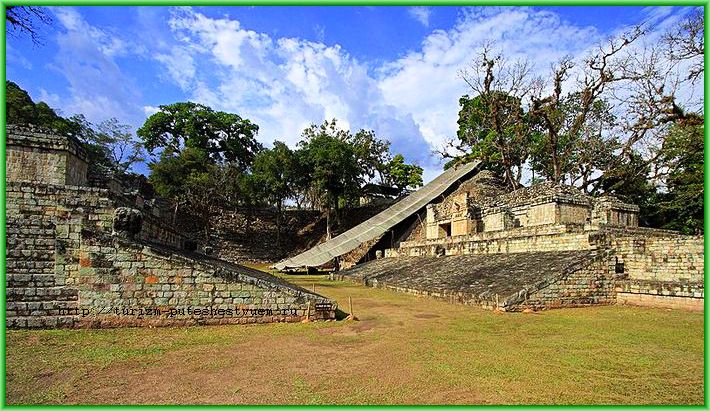 Even in the 19th century, historians have seen the Mayan pyramids, as well as their sacred churches with the divine masterpieces of ancient culture on the territory. Tse misto Copan. Hundreds of thousands of tourists come here very quickly name history passed civilizations. Moreover, the eccentricities of nature also allow outdoor enthusiasts to enjoy rafting on boisterous mountain rivers, or just go down by the sun on the green beaches surrounded by palm trees.
Even in the 19th century, historians have seen the Mayan pyramids, as well as their sacred churches with the divine masterpieces of ancient culture on the territory. Tse misto Copan. Hundreds of thousands of tourists come here very quickly name history passed civilizations. Moreover, the eccentricities of nature also allow outdoor enthusiasts to enjoy rafting on boisterous mountain rivers, or just go down by the sun on the green beaches surrounded by palm trees.
There is only a small part of all the beauties and important monuments, such as the richness of the Central part of America. The versatility of small-sized parks (in Guatemala, Costa Rica) and historical museums, as well as nature is not upside-down and it is not necessary to check, leave and touch them and go to Kazkov will be more expensive across Central America. First of all, you can get in touch, for such a trip to find a gift from your heart of the ever-beautiful continent.
Good to you more expensive!
